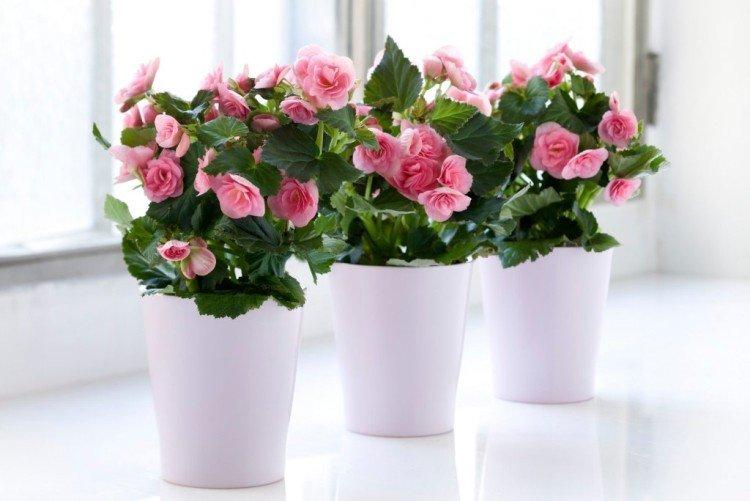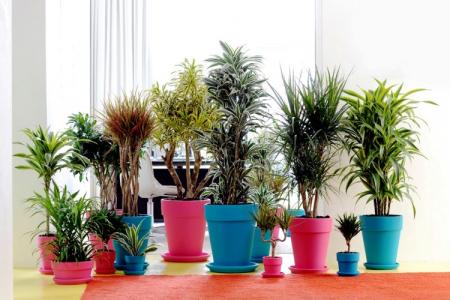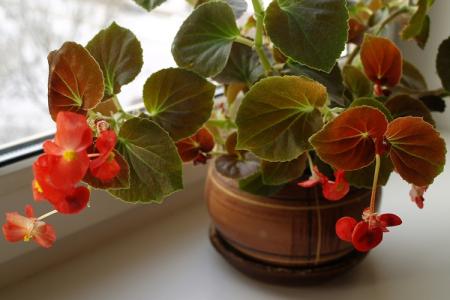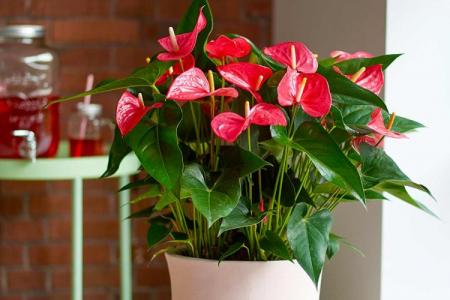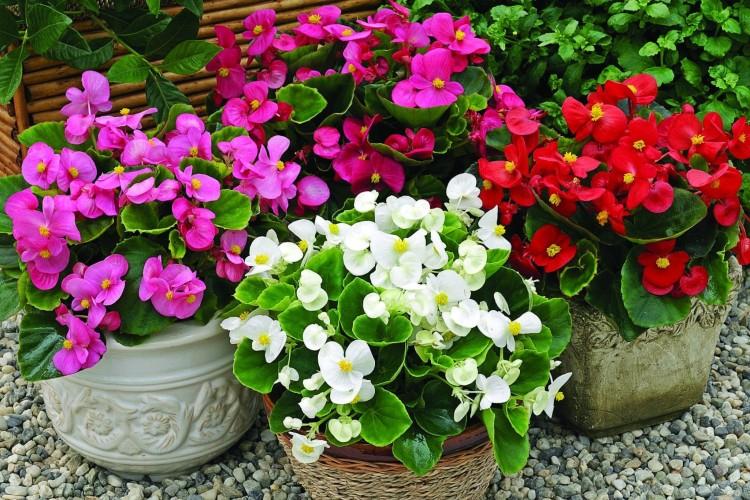
Hundreds of varieties of begonias are so diverse that inexperienced growers hardly believe that they are one and the same plant. There are flowering and decorative leafy varieties, there are tiny babies, and there are real giants. Fortunately, the specificity of their content is almost the same. We tell you all about caring for room begonia at home!
Choosing a soil for begonia
The easiest way is to choose a ready-made soil for begonias that has already been mixed in the right proportions. Flowering varieties prefer a mixture of turf, peat and humus, and for deciduous varieties, sand can be added. Sand and peat in equal proportions are suitable for young cuttings.
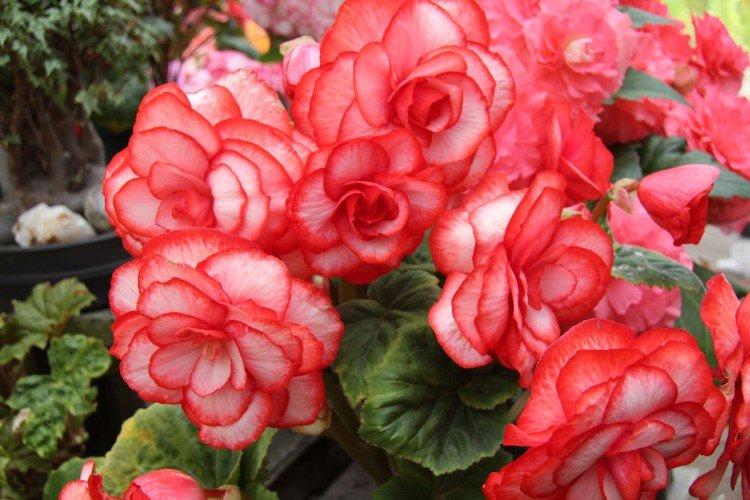
Site selection and lighting
It is best to pick up begonias in a bright place, but not in direct sunlight. In the heat on the southern windows, the flower must be shaded, because burns will remain. But in winter, a phytolamp will come in handy, otherwise the plant grows worse, and then blooms worse.
Keep in mind that change is difficult for begonia. So it is better not to rearrange it back and forth, but to create stable conditions in one place. The still delicate plant does not tolerate drafts.
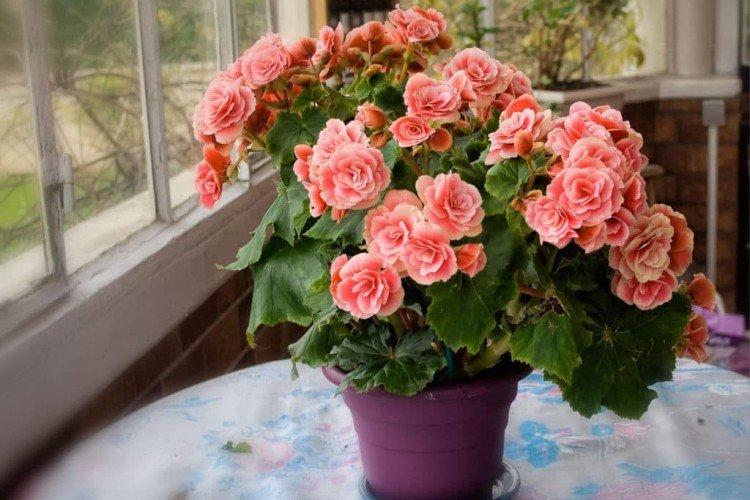
Watering and spraying
Begonia is watered with warm and well-settled water, and in winter it is a couple of degrees warmer than the air in the room. This is a moisture-loving plant, so it is important that the earth does not dry out. If this does happen, leave the pot in a bowl of water for half an hour so that it covers about 2/3 of it.
Begonia loves moisture, so you can put the pots in trays of damp sand or expanded clay. In the summer, you can spray the leaves, but this method is only suitable for varieties with non-pubescent plates. In other cases, it is better to humidify the air around.
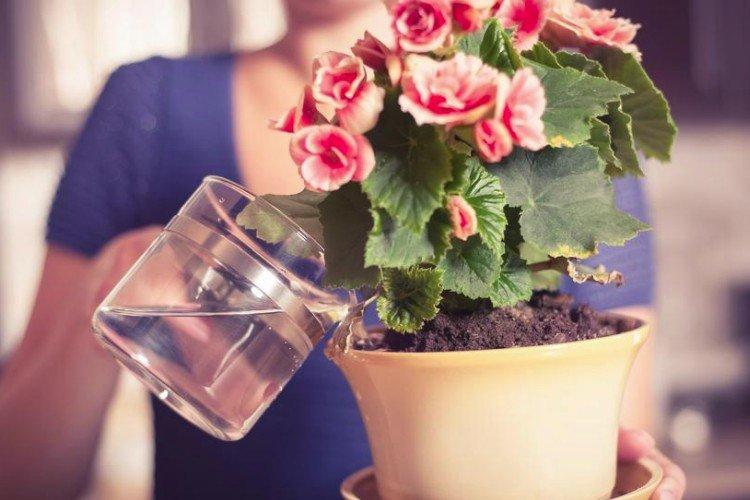
Air temperature for begonias
Begonia is a thermophilic plant that is very sensitive to temperature extremes. This is not so noticeable in deciduous varieties, but flowering varieties can be seriously affected. The optimum temperature for young shoots is from 16 to 18 degrees, and for adult plants - from 22 to 24. In winter, it should be reduced to 18-22.
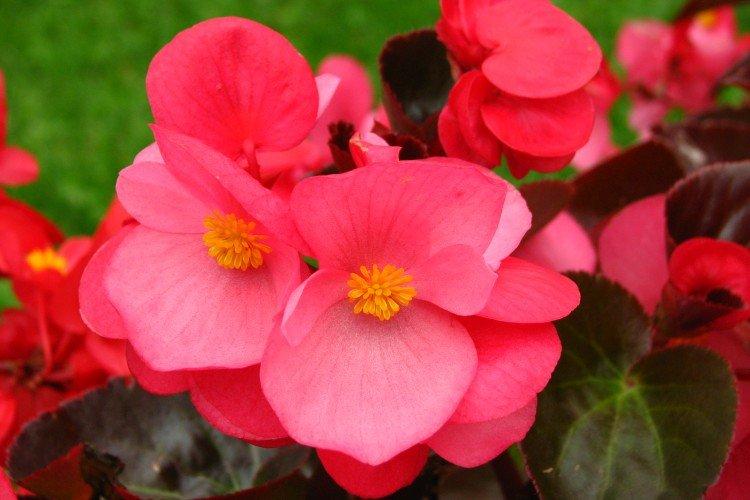
Fertilizing and feeding begonias
Complex fertilizers are suitable for home begonias, and tuberous species need them most of all. Add more nitrogen to build up shoots and leaves, but keep in mind that it inhibits flowering. For buds you need potassium with phosphorus.
Fertilizer should be applied only during the warm season, preferably in the evening and a couple of hours after watering. Make sure that granules, sticks or liquid do not fall directly on the plant, as burns may remain. Remember that overfeeding a flower is very harmful, so do not exceed the dosage indicated on the package.
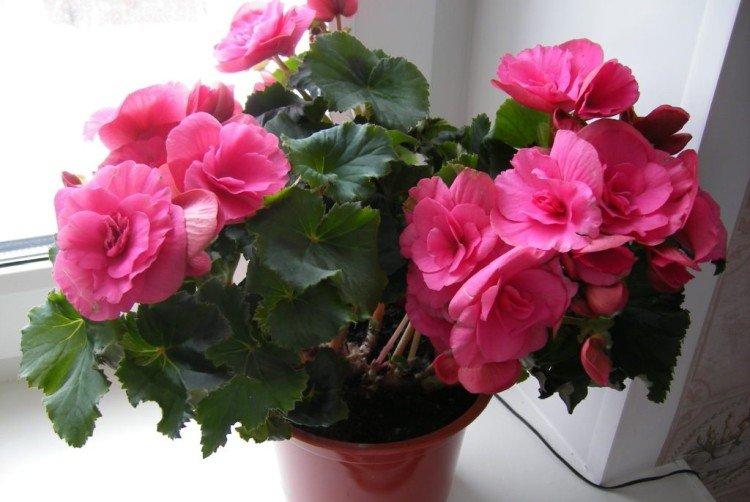
Pruning indoor begonia
Begonia is periodically thinned out so that it does not grow and does not lose its decorative properties. Remove all wilted and damaged leaves. In the fall, cut the buds of the tuberous varieties so that they can adapt to winter. Tall flowers can be tied up so that they do not break.
Only some varieties need classic pruning. Deciduous and tuberous varieties do without it, but the ever-flowering one needs to be slightly shortened. Prune loose, thin and too long shoots to stimulate branching. Long but powerful stems can be cut in half.
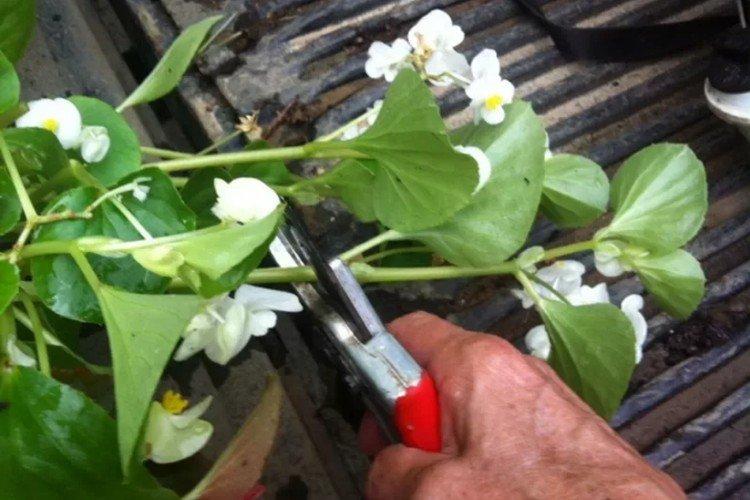
Reproduction methods
The quickest and easiest way to propagate begonia is cuttings. They can be rooted directly into loose, light soil. At this time, the main thing is not to overflow the plant and make sure that water does not fall on the leaves. You can leave it in water, but there is a high risk that the plant will rot.
Cuttings are cut only from stemmed begonias. It is desirable that it has about 5 cm and a few leaves.If it is a tuberous variety, then separate the stalk from the tuber itself, and then it should be about 12 cm in it. Before planting, let them lie down for a couple of hours to dry the cut a little.
We do not recommend propagating begonias by seeds - this is ineffective and not always successful. It is necessary to maintain special conditions, otherwise you may not wait for the shoots at all. In addition, decorative varieties often lose their characteristics with such cultivation.
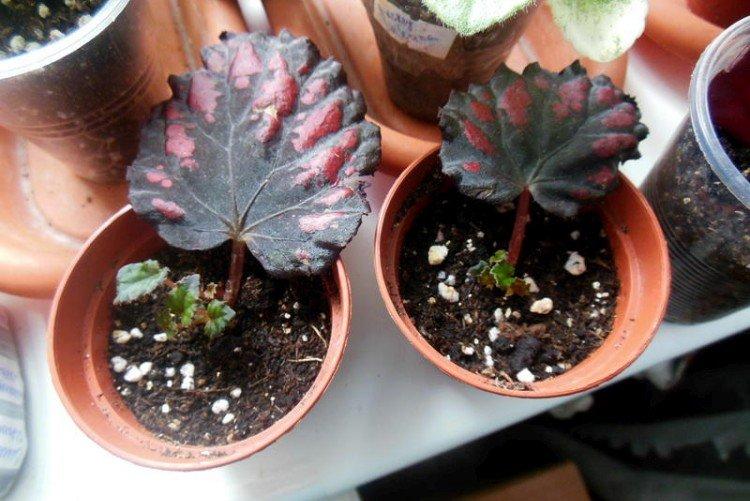
Reproduction of room begonia with tubers
Tuberous varieties are propagated by tubers, and this is the easiest way. You just need to bury them in a pot with drainage and soil as close to the surface as possible. And when the first shoots sprout - add another 2-3 cm of earth. It makes sense to do this in January.
To divide the tuber, you need a mother plant older than three years, and that on each tuber there are from three strong and healthy buds. You need to cut with a sharp knife, processing the cut with crushed coal. Leave at least one kidney on each section. It is important to be in time in early spring, before the shoots begin to grow. Before the first leaves appear, make a mini greenhouse from a cut plastic bottle.
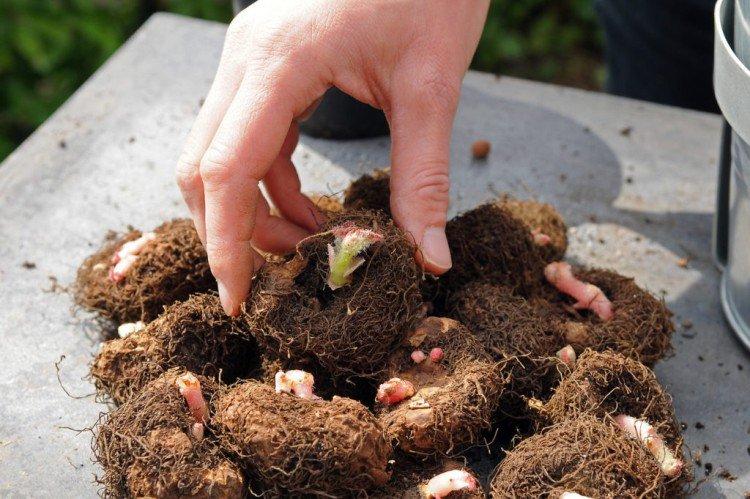
Propagation of room begonia by leaves
Ornamental varieties can be propagated by leaf plates. This is perhaps the most unusual, but also very effective way. Choose a large, healthy leaf and cut it into pieces so that each has a portion of the main longitudinal vein.
Spread the leaf fragments into a light soil of peat and perlite so that this vein touches the ground - roots will sprout from it. In this case, the leaves can be placed vertically or laid horizontally. The third option is to take a whole sheet, make transverse cuts on it and put it right on the ground. But for such breeding methods, it is better to make a small greenhouse out of film.
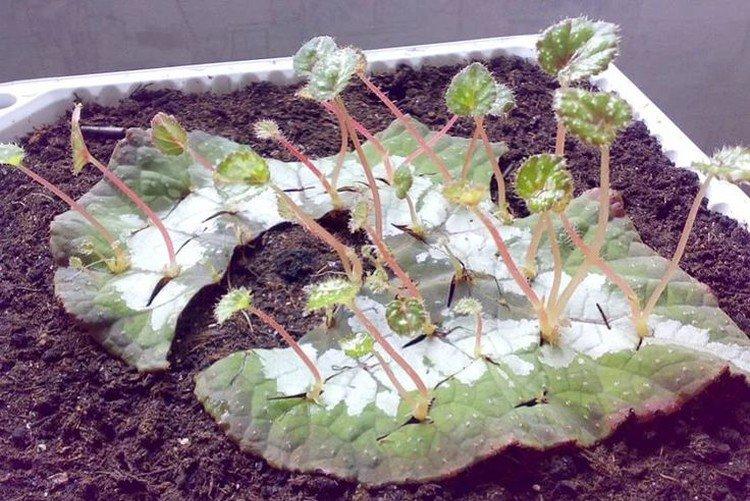
Begonia transplant
It is best to transplant begonias simply by transshipment with an earthen clod. It is advisable to do this after purchase and then every year, because a flowering plant depletes the soil. But do it strictly after flowering, otherwise the buds will fall off.
For young and actively growing begonias, choose a pot 4 cm larger than the old one. Be sure to make a thick drainage layer so that water does not stand in the ground.
After removing from the old pot, it is useful to slightly moisten the roots in a rooting agent or a weak solution of potassium permanganate. Do not bury the root collar in the soil. Then fields the begonias, and after a couple of weeks add some more soil when the one that is, settles.
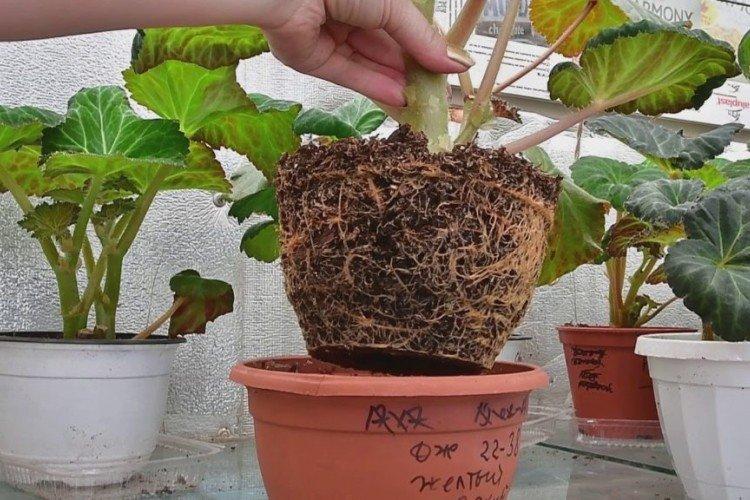
Important!
Deciduous begonias grow all year round, but the flowering ones definitely need peace. Do not use fertilizers, lower the temperature slightly, and reduce watering. Tuberous varieties do not need to be watered.
